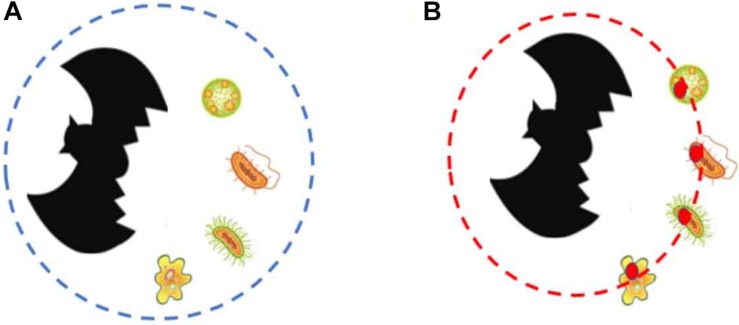FIGURE 2.
The figures represent a host (bat) plus the set of microbial taxa it interacts with. (A) Represents each taxa, and assumes that the individuality of the holobiont consists in the collection of organisms, including the host and the bacterial taxa that reside on its microbiome (represented by a dashed blue circle). (B) Represents our emergentist account, according to which the holobiont is the entity composed by the host plus the etiological adaptations that allowed the evolution of sanguivory that are borne by the taxa that compose its microbiome (the adaptive traits are represented by the red circles, and the boundaries of the emergent holobiont are represented by the dashed red circle). These adaptive traits that belong to the emergent holobiont (despite being borne by the bacterial taxa) include the set of genetic components that Mendoza et al. (2018) proved to have been selected to cope with the challenges of sanguivory.

